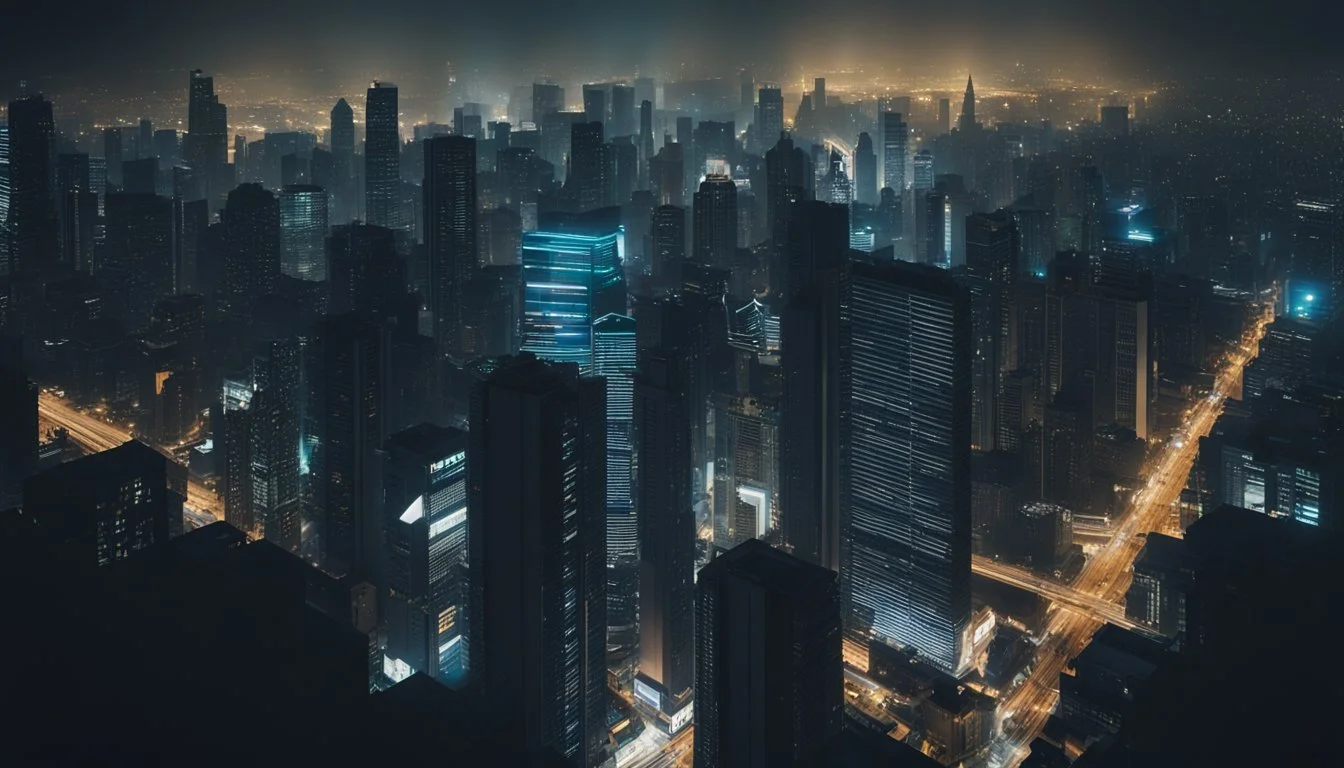Controversial Documentary The Killing of America Faces Censorship and Suppression
In 1981, a documentary called "The Killing of America" sparked controversy due to its graphic depiction of violence in the United States. The film's raw portrayal of real-life murders, assassinations, and social unrest led to its suppression in America, despite being widely distributed in other countries.
The censorship of "The Killing of America" raises important questions about freedom of expression and the limits of acceptable content in American media. While some argued the film was too disturbing for general audiences, others saw its suppression as an attempt to gloss over uncomfortable truths about violence in society.
The documentary's treatment in the U.S. contrasts sharply with its reception abroad, where it was often viewed as a sobering examination of America's relationship with violence. This disparity highlights the complex interplay between cultural values, media censorship, and the public's right to access potentially controversial information.
Historical Context of 'The Killing of America'
"The Killing of America" emerged during a turbulent period in U.S. history marked by rising crime rates and social unrest. The documentary aimed to shed light on the escalating violence plaguing American society in the late 20th century.
Production and Content
"The Killing of America" was produced in 1981 by Japanese and American filmmakers. The documentary incorporated shocking archival footage of real-life violence, including assassinations, mass shootings, and serial killings. It chronicled notable events like the Kennedy and King assassinations, as well as the rise of infamous criminals such as Charles Manson.
The film's creators sought to present an unfiltered look at America's violent underbelly. They compiled news footage, interviews, and crime scene images to create a visceral portrayal of a nation grappling with escalating brutality.
Initial Reception and Controversy
Upon its release, "The Killing of America" sparked immediate controversy. Critics praised its unflinching approach to documenting violence, while others condemned it as exploitative. The film's graphic content led to censorship in several countries.
In the United States, the documentary faced limited theatrical distribution. Many theaters refused to screen it due to its disturbing subject matter. Some politicians and community leaders voiced concerns about the film's potential to incite copycat violence.
Despite the controversy, "The Killing of America" gained a cult following. It became particularly popular in Japan, where it was seen as a cautionary tale about the dangers of gun violence and social decay.
Cultural and Societal Impact
"The Killing of America" sparked intense debates about violence in American society and shaped public perceptions of crime and safety. Its suppression raised questions about media censorship and the portrayal of real-world violence.
Influence on American Society
The film's graphic depiction of violent crimes challenged societal norms around media content. It exposed viewers to harsh realities often sanitized in mainstream news coverage. This raw portrayal of violence sparked discussions about crime rates, gun control, and social decay.
Some communities organized protests against the film's release, fearing it could inspire copycat crimes. Others defended it as an important documentary exposing societal issues. The controversy highlighted tensions between free speech and public safety concerns.
The suppression of "The Killing of America" became a focal point for debates on media censorship. Critics argued it infringed on First Amendment rights, while supporters claimed it protected vulnerable viewers from disturbing content.
Impact on Views of Violence
The film's unflinching look at real-world violence forced many Americans to confront uncomfortable truths about crime in their society. It challenged romanticized notions of violence often portrayed in fictional media.
For some viewers, the documentary increased fears about personal safety and crime rates. Others saw it as a call to action to address root causes of violence. The film's suppression led some to question whether ignoring societal problems would make them disappear.
Law enforcement and policymakers debated the film's potential impact on public perceptions of security and policing. Some worried it could erode trust in institutions, while others saw it as motivation for reforms.
Themes of Violence in American Media
Violence permeates American media, shaping public perceptions and sparking debates on censorship. Its portrayal ranges from graphic depictions to subtle undertones across various forms of entertainment and news coverage.
Perception of Violence in Entertainment
Violence in movies, TV shows, and video games has long been a contentious issue. Many argue it desensitizes viewers, especially youth, to real-world aggression. Studies show mixed results on direct links between media violence and aggressive behavior.
Some research suggests violent content can increase short-term aggression in certain individuals. Other studies find no significant long-term effects on violent crime rates.
The entertainment industry often defends violent content as artistic expression or reflective of societal issues. Critics argue it glamorizes or normalizes harmful behavior.
Censorship and Freedom of Speech
Attempts to regulate violent media content face strong opposition on First Amendment grounds. The Supreme Court has consistently protected violent speech in entertainment as free expression.
Government agencies like the FCC have limited power to restrict violence on broadcast TV. Cable and streaming services face even fewer content restrictions.
Media ratings systems like those used for movies and video games aim to inform consumers without imposing outright bans. Some argue these voluntary measures are insufficient to protect children.
Social media platforms grapple with moderating violent content. Their policies often try to balance free speech concerns with efforts to limit the spread of extreme or graphic material.
Political Dynamics and Violence
Political tensions in America have escalated in recent years, leading to increased instances of violent rhetoric and action. The partisan divide has deepened, with impacts rippling through political discourse and public behavior.
Partisan Conflict and Political Violence
The 2024 election cycle has seen a surge in politically-motivated violence. In August, a Republican congressman was assaulted at a campaign event. Democrats faced threats over proposed gun control legislation. The U.S. Capitol implemented enhanced security measures following intelligence about potential attacks.
Anger has intensified across the political spectrum. Far-right groups clashed with police in several cities. Left-wing protesters vandalized the offices of conservative politicians.
A Pew Research poll found 62% of Americans feared violence related to the presidential election. Law enforcement agencies increased staffing to monitor extremist activities.
Impact on Political Discourse
Violent rhetoric has seeped into mainstream political speech. Some politicians used militant language to energize supporters. Others condemned such tactics as dangerous to democracy.
Media coverage highlighted inflammatory statements, potentially normalizing aggressive political expression. Social media platforms struggled to balance free speech with misinformation concerns.
Public debate became more polarized. Moderate voices found less traction in a charged atmosphere. Conspiracy theories gained wider audiences, further eroding trust in institutions.
Nancy Pelosi called for a "return to civility" after receiving death threats. Republican leaders urged supporters to express views peacefully. Democrats pushed for stronger online content moderation.
Civil Liberties and Government Response
Government responses to perceived threats can significantly impact civil liberties. Balancing security concerns with individual rights remains an ongoing challenge for democratic institutions.
Role of Law Enforcement
Law enforcement agencies play a crucial role in maintaining public safety while navigating civil liberties concerns. Police departments face scrutiny over tactics used during protests and demonstrations. Crowd control measures like tear gas and rubber bullets have drawn criticism for potentially infringing on First Amendment rights.
Body cameras aim to increase transparency, but privacy issues persist. Facial recognition technology raises questions about surveillance overreach. Community policing initiatives seek to build trust between officers and residents.
Legislation and Protection of Rights
Congress has passed laws aimed at enhancing security, sometimes at the expense of civil liberties. The USA PATRIOT Act expanded government surveillance powers after 9/11. Critics argue it undermines privacy rights and due process.
The Foreign Intelligence Surveillance Act (FISA) governs intelligence gathering on foreign targets. Amendments have sparked debate over balancing national security with Fourth Amendment protections.
Courts play a vital role in interpreting these laws. Supreme Court decisions on issues like warrantless searches and data privacy shape the legal landscape. Civil liberties groups continue to challenge government policies through litigation.
Modern Resonance and Contemporary Relevance
The themes explored in "The Killing of America" continue to resonate in modern society, sparking ongoing debates about media depictions of violence and their societal impacts. The documentary's controversial content remains relevant to contemporary discussions on extremism, political unrest, and the role of visual media.
The Echo in Today's America
Political violence and extremism have seen a troubling resurgence in recent years. Armed protests, threats against public officials, and ideologically-motivated attacks have increased. Social media platforms like Facebook and Twitter amplify radical ideologies and conspiracy theories, contributing to a climate of polarization. The January 6th Capitol riot highlighted the potential for politically-motivated violence to threaten democratic institutions.
Racial tensions and police brutality continue to spark widespread protests, echoing issues examined in the original documentary. Mass shootings remain a persistent problem, reigniting debates over gun control and mental health services.
Continuing Debates Over Media and Violence
The relationship between media depictions of violence and real-world aggression remains hotly contested. Some argue that graphic content desensitizes viewers and normalizes violence. Others contend that media reflects rather than causes societal issues.
Social media introduces new dimensions to this debate. Viral videos of violent incidents can spark outrage and protests. Platforms struggle to balance free speech concerns with efforts to limit the spread of extremist content.
Renewed interest in true crime documentaries and podcasts raises ethical questions about the exploitation of tragedy for entertainment. Critics argue these works can glorify violence or retraumatize victims' families.






